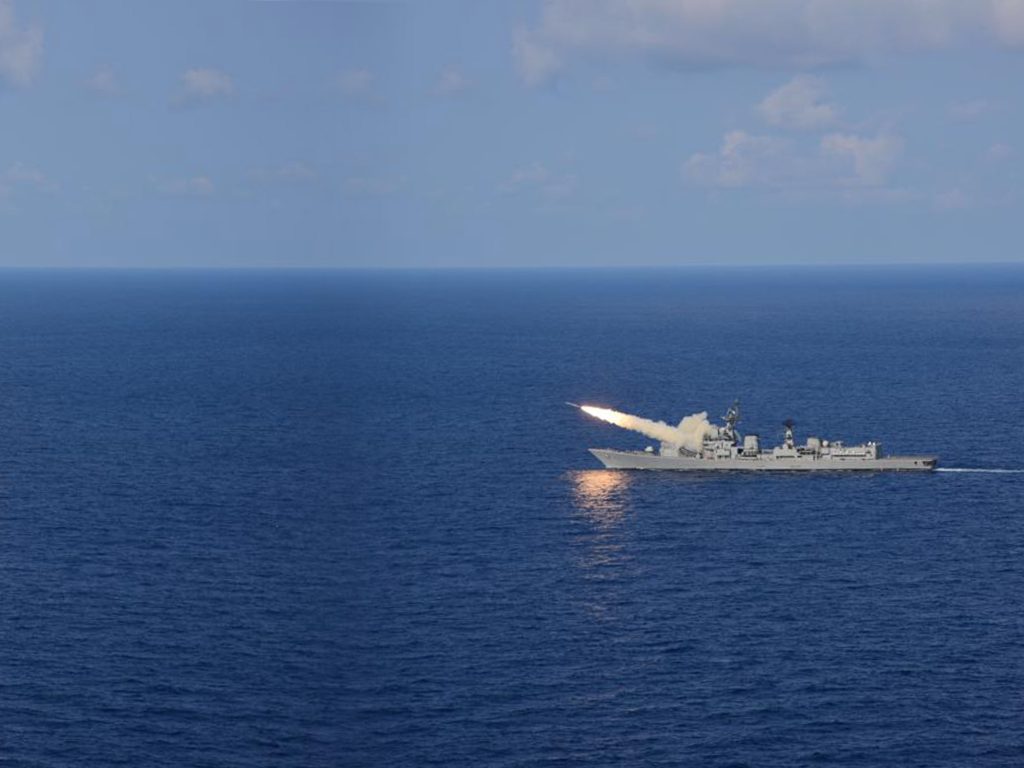By Aritra Banerjee
In a $2.5 billion mega-order, the Indian Navy is set to procure more than 200 BrahMos supersonic cruise missiles. This is a landmark deal for India’s domestic manufacturing sector. This will mark the company’s largest-ever one-time order. The cutting-edge missiles will be fitted on all frontline warships in the maritime force, according to sources in the senior echelons of the nation’s defence establishment.
BrahMos, a joint venture company established by India’s Defence Research and Development Organisation (DRDO) and Russia’s rocket design bureau NPO Mashinostroyeniya (NPOM), recently conducted successful test firings of the missile with a significant portion of locally produced content. The company is also working to equip the missile with an indigenous seeker, further enhancing its capabilities.
Sources indicate that the Indian Navy’s proposal to purchase over 200 BrahMos supersonic cruise missiles is at an advanced stage and is expected to receive imminent approval from the Defence Ministry. This acquisition will enable the Indian Navy to augment its missile stockpile for deployment on warships and mobile coastal missile batteries across the force.
In recent years, the BrahMos missile system has undergone significant enhancements, with the Indo-Russian joint venture company boosting its strike range from 290km to over 400km. The system’s indigenous content has also been increased, with various components upgraded and localised to boost the participation of Indian industry and manufacturers.
The BrahMos missile system is gaining traction globally, with the Philippines agreeing to purchase it. The Philippines Marine Corps has already undergone training at BrahMos facilities in India, with more batches set to receive instruction in the future.
The Chief Executive Officer & Managing Director of Brahmos Aerospace, Atul Dinkar Rane, aims to achieve a $5 billion export target established by Indian Prime Minister Narendra Modi. Rane had previously commented that his team is working to achieve this ambitious goal following a successful $375 million export deal with the Philippines.
Indian Prime Minister Narendra Modi’s bold objective of boosting the nation’s defence exports to $5 billion by 2024-25, a significant leap from the current $1.5 billion, is no small feat. However, some analysts indicate that the BrahMos supersonic missile, with its immense potential, could singlehandedly account for $3 billion by 2026.
Supersonic BrahMos: The Game-Changer In India’s Naval Arsenal

The BrahMos supersonic cruise missile has been seen as a potent weapon system changing the game for India’s Navy. The missile can be launched from leading surface warfare ships, such as the Kolkata, Rajput, and Teg classes, to strike targets far from the coast. The indigenously-developed destroyer INS Kochi embodies new design concepts for improved survivability, stealth, sea-keeping, and manoeuvrability.
The BrahMos is equipped with a supersonic speed of Mach 3, a very low-cruising altitude of 10 metres at the terminal phase, and pinpoint accuracy. Its design is such that it can evade shipboard defences, combined radar, and fire-control systems (FCS) found on board destroyers and cruisers, rendering it difficult to detect and track. This missile system is designed to deliver a deadly blow to adversaries without being detected by any air defence systems, making it a formidable and lethal platform for the Indian Navy.
The submarine-launched version of BrahMos was successfully test-fired from a submerged platform in the Bay of Bengal off the coast of Visakhapatnam, making it the first time any supersonic missile was launched vertically from a submerged platform. This new variant of the cruise missile will add more firepower to the underwater weapon delivery capabilities of the Indian Navy.
The Indian Navy has been making consistent strides in forming its combat capabilities and constructing weapons and equipment. It has acquired modern weaponry, such as next-generation offshore patrol vessels (NGOPV), anti-ship missiles (AShM), multi-purpose vessels, high-endurance autonomous vessels, and more. The objective is to attain self-reliance and incorporate innovative indigenous solutions for future challenges.
India’s emergence as a strategic actor and growing maritime reach has made its Navy an indispensable part of the Indian Armed Forces, playing a crucial role in maintaining peace on the country’s maritime front.
The BrahMos supersonic missile system by all accounts has been described as a force to be reckoned with, and its successful deployment by India’s Navy will help to maintain the country’s competitive edge in naval warfare.





